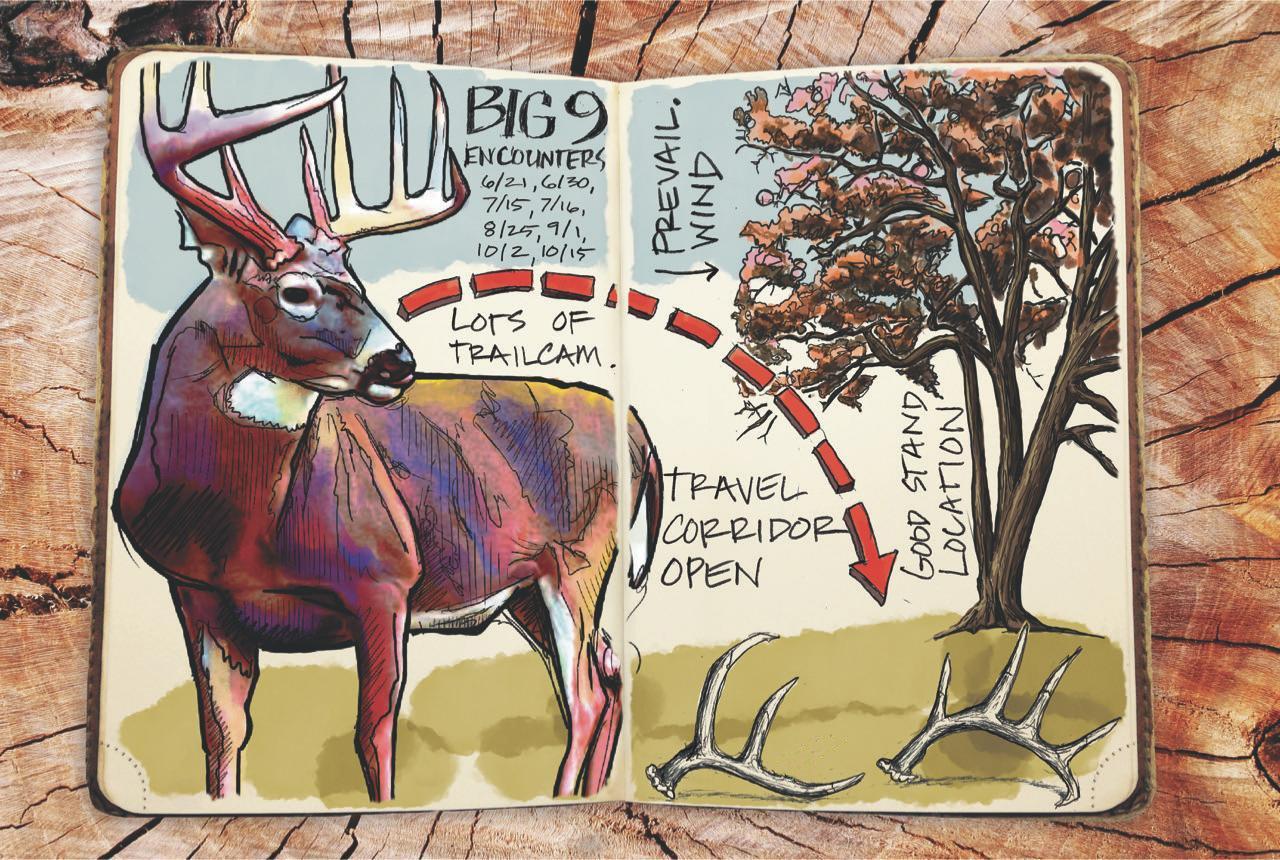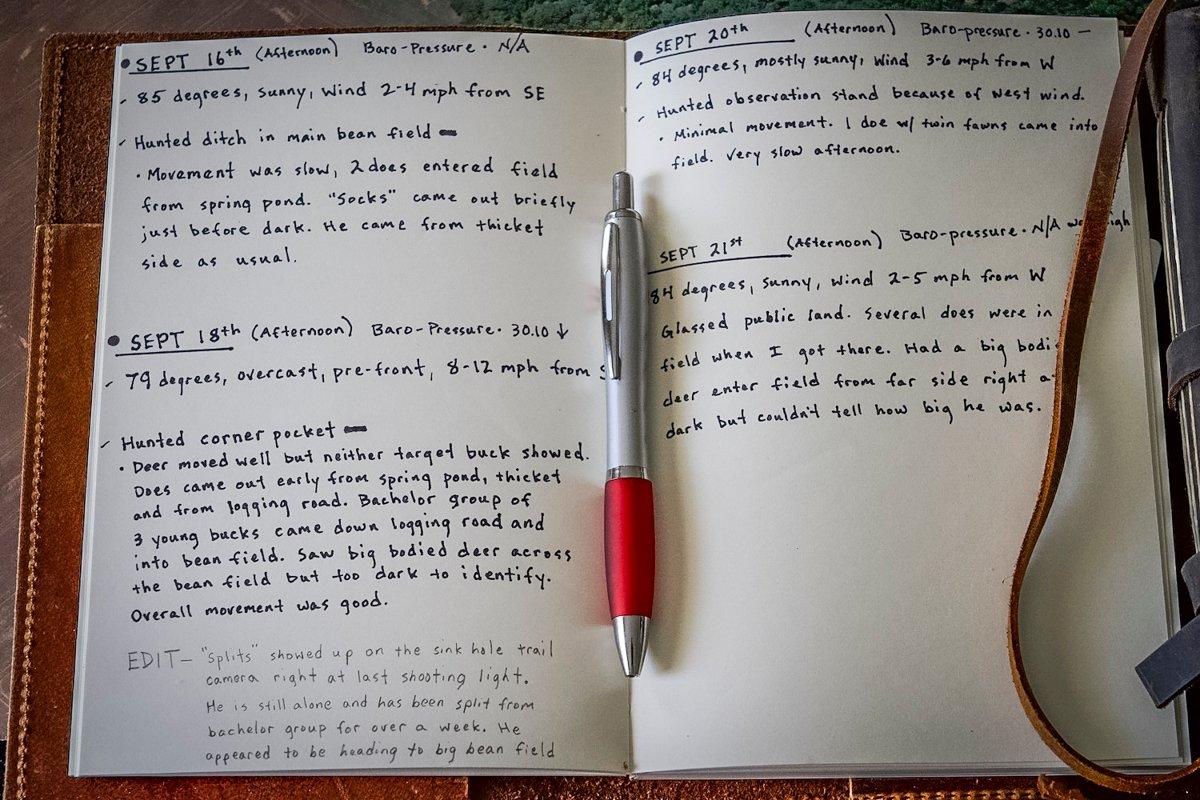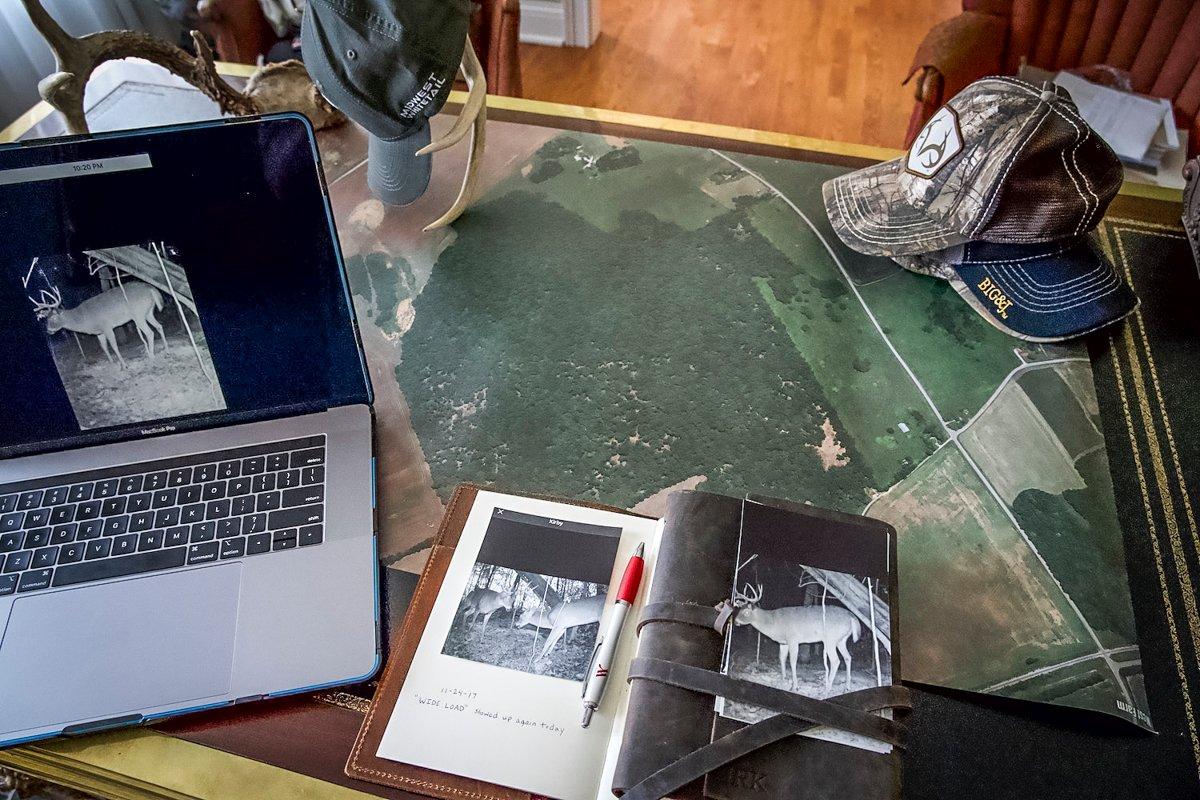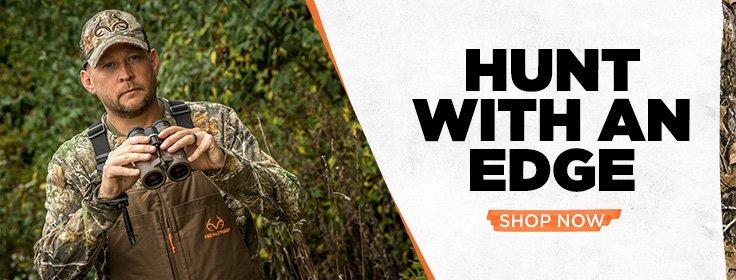Taking notes on deer behavior with an old-school pen and paper can still be one of the best scouting tools you have
The thought of keeping a journal conjures up childhood memories of the time my older sister caught me reading her diary. It resulted in the beating of my life. There's nothing real glamorous about the thought of revealing to your hunting buddies that you have a deer hunting journal. But there are dozens of ways a journal can benefit you, as well as your hunting partners who will probably crack jokes at your expense.
Who Needs a Journal?
The simple answer? Everyone. Hunting journals are valuable assets to new and experienced hunters. Veteran hunters use the information to help piece the puzzle together. The hunting journal can illuminate patterns and trends in deer movement, herd health, property changes and many other important factors. It's a place to inventory scrapes, rub lines and other sign. It helps inform decisions based on information collected in past seasons. It's a great way for novice hunters to log experiences and build confidence. Learning from mistakes is the best way to grow as a deer hunter.
Although a journal doesn't equate to a scientific study, gathering data is similar to conducting action research or a case study. Using a journal prompts us to research specific properties or deer. It's a way to collect and analyze data. When we gather and examine it, we find rationale for using certain techniques and strategies.
Hunting journals can transcend generations, too. Most of us would love to have the hunting journals of our parents, grandparents or other ancestors and mentors. Although many of my grandfather's hunting stories are etched into my memory, that doesn't guarantee those tales will be passed down. Had my grandfather kept a hunting journal, I'd treasure it. Even though we rarely hunt the same properties that our ancestors did, their knowledge would still be valuable. More importantly, we'd be able to relive their adventures.
What to Write
There are no rules in terms of what to enter in your hunting journal. These are personal collections of experiences and encounters. But the more details you include, the more information you can draw from it. Weather, wind direction, barometric pressure, hunting locations, moon phases and temperature swings represent important types of notes to enter into journals. Once these elements are recorded, detail the number and type of deer seen, the time that you saw them, and their direction of travel.
Furthermore, detail target buck personality traits as you identify them. One of the biggest assets of a hunting journal is the ability to record subtle patterns over the course of a hunting season, or even multiple ones. Hunters are generally good at recalling deer encounters from past hunts, especially meetings with target bucks. But it's impossible to dredge up every memory. And therein lies the beauty of the hunting journal.
Detailed notes help connect the dots for inconspicuous patterns that otherwise might go unnoticed. These things can jump off the pages of your deer journal and paint a picture that you might not otherwise spot.
Spartan trail camera data is also crucial, and I always add in notable trail camera photos with their corresponding journal entries. Adding trail camera intel to your deer journal not only benefits you in the short-term but can also pay off in the long game. It can reveal yearly trends or tendencies of individual deer. This practice has consistently divulged data that I likely would've missed if I hadn't chronicled trail camera information in my hunting journal.
A field journal even aids in deer identification. It's extremely difficult to identify every individual deer in a herd, but you can ID many of them by being attentive to and noting details such as antler shape, fur patterns, facial features, scars, shapes of throat patches, tail colorations and other features.
Don't Miss: Deer Hunters: Don't Overthink It
Maximize the Resource
Make notes about new research or data. Tape or paste important information from hunting articles into the journal. Referring back to this information is easier when it's all contained in one location. It keeps you from forgetting the article or not being able to locate it once it's time to put the information into action.
For those who spend time afield with family and friends, a shared hunting journal provides an immense amount of data and information. Be it one common journal or combined individual ones, each hunter gains insight into the experiences of others. As a hunter, you only know what you see and experience. But when you have the collective insight of others who hunt the same ground, you learn even more.
Use journals to make a list of off-season tasks, timelines and objectives to complete in the spring and summer. Make reminders to put in water sources, food plots and mineral sites in strategic locations. Enter locations to hang deer stands and trim shooting lanes. Check off items as they're completed. It provides a sense of accomplishment and keeps us focused on remaining tasks.
My Story
Perhaps my best example of the benefits of keeping a journal dates back to late November of 2016. A mature 9-pointer I named Wide Load showed up on trail camera for the first time. I was already tagged out in Kentucky that year, so hunting Wide Load wasn't an option. Even so, I kept track of him. He was a regular for several weeks. Then, he vanished.
As the 2017 deer season approached, I hoped he'd reveal himself. In late November, he abruptly appeared again. But I was already focused on a different buck, a heavy, main-frame 10-pointer with a split G2. By the time 2018 rolled around, I'd all but forgotten the two back-to-back November visits from Wide Load, and I ended up filling my buck tag with a different deer early in the month.
That left me without a buck tag in my pocket when Wide Load made his usual late-November appearance. Interestingly, when I finally entered all of the dates during which he'd made daylight appearances, and reviewed notes from previous years, I discovered he'd visited the exact same spot at the same time three years in a row. I would have overlooked this pattern without detailed journal notes and trail camera intel. And I have many other similar stories where a journal proved beneficial.
I've already filled my 2019 Kentucky tag, but will Wide Load show up again this November? Maybe. And if he does, it just might help me in my pursuit of him in 2020.
Don't Miss: Your Roadmap to a Big Public Land Deer
Check out more stories, videos and educational how-to's on deer hunting.












